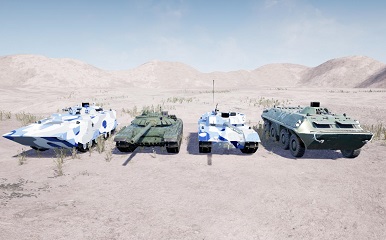ZHANG Lin;WEI Chao;HU Jibin;HU Qi
Acta Armamentarii. 2020, 41(7):
1270-1279.
It is found in experiments that the rub-impact between friction plate and steel plate is easy to appear in the high-speed no-load wet clutch, which results in the sharp increase in drag torque. The high-speed drag torque has significant negative influence on the efficiency and reliability of transmissions. So it is necessary to establish a reliable rub-impact model of friction pair to explore the change law of high-speed drag torque. The fluid stiffness and damping are derived to obtain the fluid forces by small perturbation method. The elastic deformations and energy loss in the process of rub-impact between friction plate and steel plate are analyzed to establish the rubbing function of friction pairs. On this basis, the fluid force, rub-impact force, friction, and coupling motion between the friction plate and steel plate in three degrees of freedom are taken into consideration to establish a fluid-solid coupling rub-impact dynamic model for multi-plate wet clutch, which is solved by fourth-order Runge-Kutta method. Then the bifurcation and chaos characteristics of non-linear motion of friction pairs are analyzed. The research results indicate that, when the friction pair does not contact, the friction/steel plates move stably and show periodic movement rule; when the friction pair impacts, the friction/steel plates lose stability and show chaotic motion under the action of axial rub-impact force; and with the increase in the flow rate of lubricating oil, the critical rub-impact speed of friction pair climbs, but the rub-impact frequencyalso grows, resulting in the increase in the drag torque.Key




